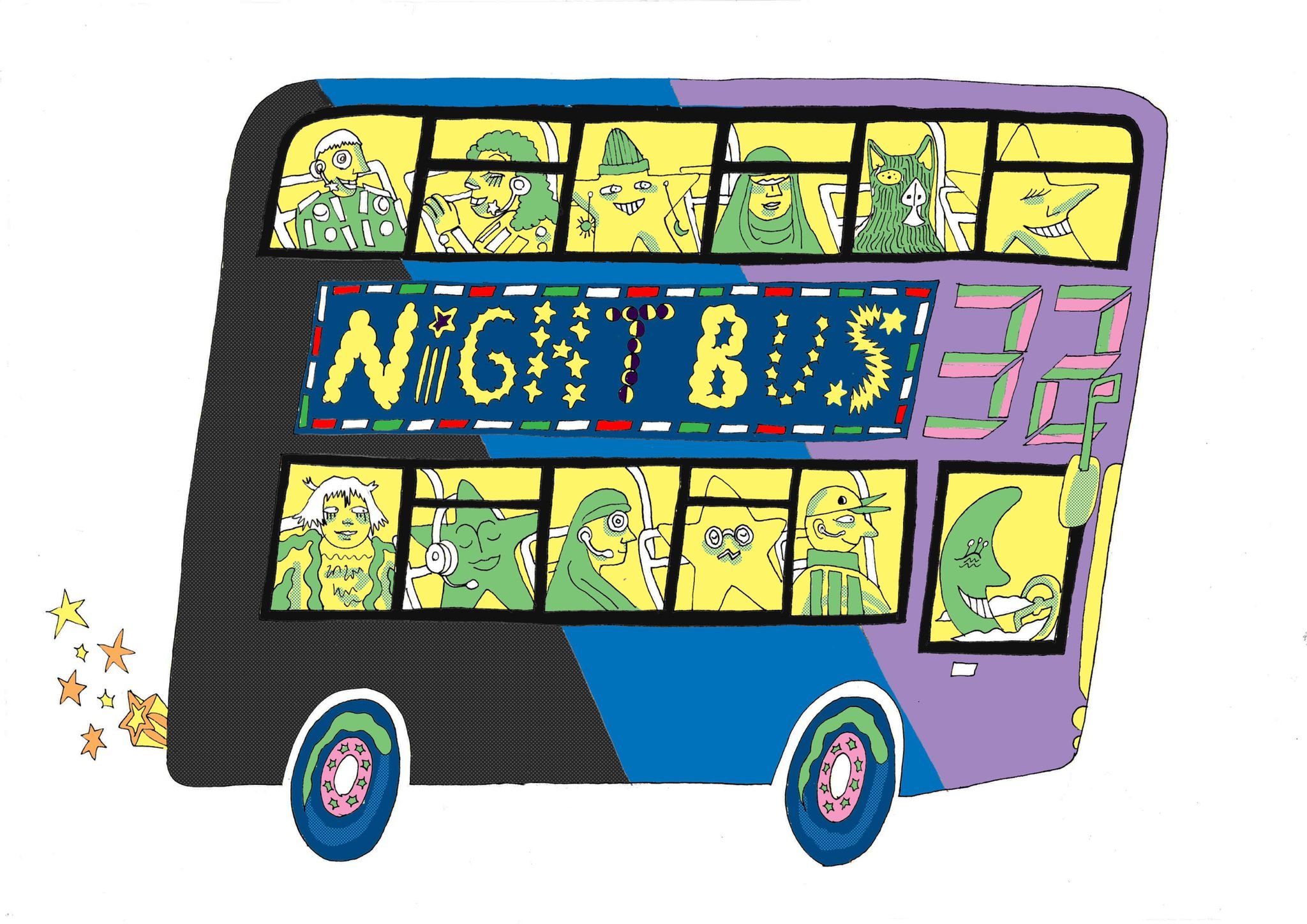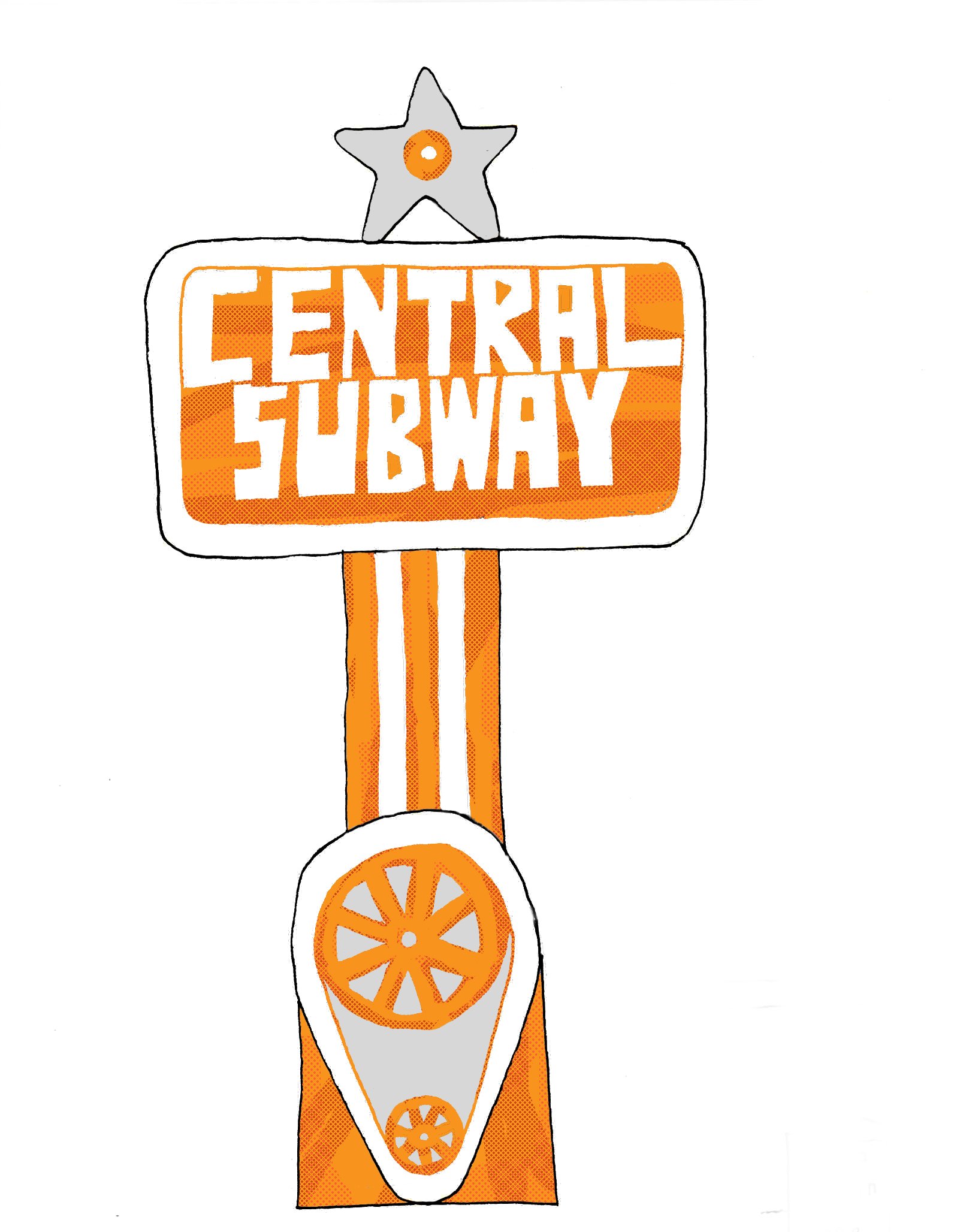Govanhill: Dreams of the Future
We asked a number of people in Govanhill to imagine a future, a more perfect version of the neighbourhood, 10 years from now.
Illustrations by Laura Wade
Shgufta Ali - founder, Women on Wheels
In the future, women on wheels, happily cycling down Victoria Road – the heart of Govanhill – would be the norm and not the exception. The sight of a very obviously Muslim woman would not send onlookers into convulsions. Instead, they would gaze at her in envy and admiration, in awe of her confidence and evident skill; wishing that they too could look half as graceful whilst pedalling.
The roads (and cycle paths) would be a place of synergy and equilibrium, where pedestrians, cyclists and motorists would share the space with ease. As I pedal on by, I would admire the local surroundings rather than cautiously scanning the road ahead to avoid the many potholes or general debris. I would not need to resemble a Christmas tree, kitted out in hideous hi-vis and multiple flashing lights, as adequate street lighting would be part of the established cycle infrastructure.
The women, men and children on bikes would far outnumber cars on the roads, the drivers of which would be the very epitome of politeness and kindness. A woman on wheels would be an inspiration, embodying everything that could turn a less-than-perfect reality into a utopia for all.
Becki Menzies - funding and partnerships officer, Greater Govanhill
I want Glasgow to be a place where I feel safe, empowered and listened to.
YWCA Scotland’s report, ‘Glasgow: A Feminist City?’ surveyed young women and non-binary people living in Glasgow about their experiences. Respondents highlighted issues relating to safety, convenience, accessibility and affordability with many concerned about violence and harassment women had experienced due to poor infrastructure.
As a young woman living in Govanhill, I share the same concerns. There are signs the city is moving in the right direction to improve the experience of women and non-binary people. Queen’s Park is part of a new pilot scheme to improve lighting. Another potential that Green Councillors have called for is free public transport.
Getting home safely and affordably shouldn’t be difficult.
Lighting up parks and providing decent public transport won’t fix all of the problems faced by women. But these are two easy things we could do to make Govanhill better for everyone.
Rahela Cirpaci - project coordinator, Romano Lav
When I think of a more perfect Govanhill, I see more space for everyone to be together, relax, enjoy the environment, create, and learn.
I’d like to see more benches on Victoria Road! The street is full of shops and people from all around the world and it’s nice to be able to sit and just enjoy the view.
There would be a Roma community centre where people can gather, learn new things and socialise.
I see a big garden where we can grow fruits and vegetables together, and a specific place just for barbecues. Communities can come together and enjoy outside picnics.
I see safer spaces for children where they can enjoy big, well-maintained play parks and have the freedom to explore and run around. We want Govanhill to be greener! More trees, more green spaces. We want every garden to be clean, accessible and full of nature, not piles of old furniture.
We want clean, healthy spaces to live in, but beautiful spaces too. Govanhill is my home and I want to enjoy it as much as possible with my children. Give us bread, but give us roses too!
Spyro - local maker
The free state of Glasgow Southside was established on the anniversary of the Kenmure Street protests.
The M8 was closed to motor traffic and transformed into Europe’s highest cycle lane, covered from the elements with a canopy of evergreen vines. The cycle path now winds through a managed but wild parkland, radical rent controls in the area prevent harmful gentrification practises. There’s increased health, social mobility and character for the area. Buses are run by the autonomous people's assembly, services are reliable and heavily subsidised by a tax on private cars (exemptions for those with mobility difficulties). There’s been a huge decrease in car use. Air quality and pedestrian safety have improved and streets have been transformed by green space, public transport infrastructure and child play areas.
There have been vast increases in public space. Green corridors along major roads provide shade, increased air quality, wellbeing, and habitat for local people and creatures. Every resident lives within a three minute walk of a green corridor, connecting to local parks and facilities.
The tyranny of the Department of Work and Pensions is removed from people’s lives as Job Centres are left defunct after a universal basic income comes into effect (regardless of visa or citizenship status).
Craig Hunter - hosts a show on radio buena vida
An ideal world should meet the needs of all of its inhabitants (not just me!) so I envisage a community where everyone has their voices heard equally, and greater understanding is fostered between different sections in society. A newly-revamped Govanhill Baths has the potential to act as a centrifugal force in this, bringing people into contact with neighbours through swimming, classes, events and a cuppa in a non-judgmental manner. Publications like Greater Govanhill have a similar role to play.
Cars would be largely redundant, due to the cheap, 24-hour, fully-integrated, publicly-owned transport network, and the new Subway station at Central providing an efficient link to the overground system. Many will still choose to cycle, of course, but people's needs will largely be met within walking distance of their homes.
Beatrice Onashile - cover star of our housing issue
I invest my time and energy and occasionally finance in Govanhill because I have great hopes that the environment could become a sanctuary for its residents. I see a vision of an ultra clean environment, with lots of green areas, residents feeling very proud and possessive about their community.
I see cohesiveness among the citizens, having a united front to fight for their rights. I see the new Govanhill Baths as a uniting factor for the community, where residents chill out, relax and make decisions that will enhance their living standards. The people of Govanhill would not be displaced by gentrification; rather the regeneration and cohesiveness of the community would attract further investment in the area. Govanhill will become an upmarket hub where things happen.
I also see myself as a voice in Govanhill. The passion of the people of old who fought to retain their public baths from being closed down will still remain. In ten years, Govanhill would be a place people would want to live in, without the displacement of its residents.
Ruth Cape and Jess Steele - coordinators, South East Integration Network
Govanhill already represents so much of where we hope other neighbourhoods will be in ten years’ time; with its strong, active & grassroots activity which celebrates the many communities which make up greater Govanhill. From today’s standpoint, it is impossible to look ahead without a deep concern about the current measures coming from the top of our government which fan the flames of xenophobia, racism, transphobia, and austerity, and worry about the effects that these will have on our communities over the coming years.
Despite, or perhaps, in response to this, our hope is that this community continues to build on what we have, continues to get stronger, and continues to welcome all. There are already so many organisations that exist in Govanhill which are doing amazing work to make sure this place feels like home for us all.
In ten years’ time we hope to see more of these – working together to improve the lives of those who live here. We hope to hear even more languages spoken across the streets and tenements of Govanhill, and more different voices at the forefront of community activism. We hope Govanhill stands as a shining example of true community integration and belonging.
Sean Kerwin - founder, Improve Our Park
Lunchtime in Govanhill 2032. I’ve popped down Victoria Road on my e-unicycle to grab a ciabatta from my favourite deli. Today’s special is lab-grown chicken, vertically farmed avocado and high protein cricket mayo. Delicious.
I zoom up to Queen’s Park and look for a bench to sit on.
There’s loads of kids in the playpark. The council finally invested in it after intense public pressure. I spot a kid in a wheelchair on the roundabout, shouting ‘FULL POWER’ at his dad.
Next to the play area, some teenagers are having a party by the municipal sound system. The council decided at some point in the late 20s that music was actually beneficial for people’s health and installed ‘music zones’. This one has got microphones, virtual turntables and is totally waterproof. You can literally be singing in the rain.
There’s a kid on the mic rapping about being ‘present’, whatever that means. I’m about to film a quick TikTok video but decide against it. My kids will think I’m a loser for using social media.
The sun comes out, I unwrap my ciabatta and soak up the atmosphere. I love this park.
Rhiannon J Davies - Founding Editor, Greater Govanhill
It’s 2032, and it has been twelve years since the first Greater Govanhill magazine was published. The solutions-focused coverage has brought innovative ideas into the area, to improve problems like poverty, inclusion, community cohesion and lack of equal opportunities.
It's been ten years since Greater Govanhill opened the doors to its independent media hub on Victoria Road. It’s a collaborative and inviting space. Anyone can wander in, get a free cup of tea and have a chat. People know where they can go if they have something to share, or want to raise an issue. Anyone who wants to, feels empowered to tell the stories that matter to them.
The impact of the magazine has had an effect outside the area too. Others have seen what the media can do if it takes the time to listen. Commercial models of journalism seem like such a relic of the past. Instead, non-profit is the norm (for all businesses in fact), which means sensationalist, harmful and clickbait journalism just isn’t a thing any more. News publishers are no longer owned by distant shareholders. Instead the media is community-owned and run, journalism is representative of diversity in society, and stories published are measured and nuanced, which aim to make a positive impact on society.
Have you got a vision of Govanhill you would like to share? Comment below or email jack@greatergovanhill.com



